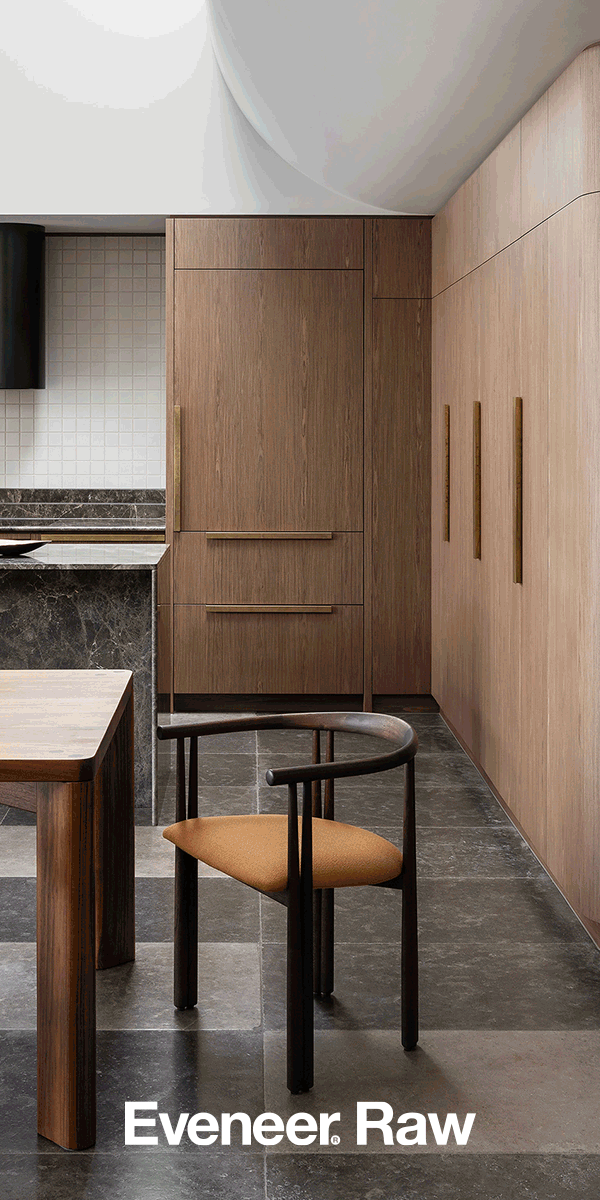The Maruku Collaboration by Tanya Singer + Errol Evans + Trent Jansen
One Year of Sydney Modern
Art and Public Spaces in Dialogue
Essay
Jessica Spresser
Photography
Iwan Baan, Felicity Jenkins, Christoper Snee
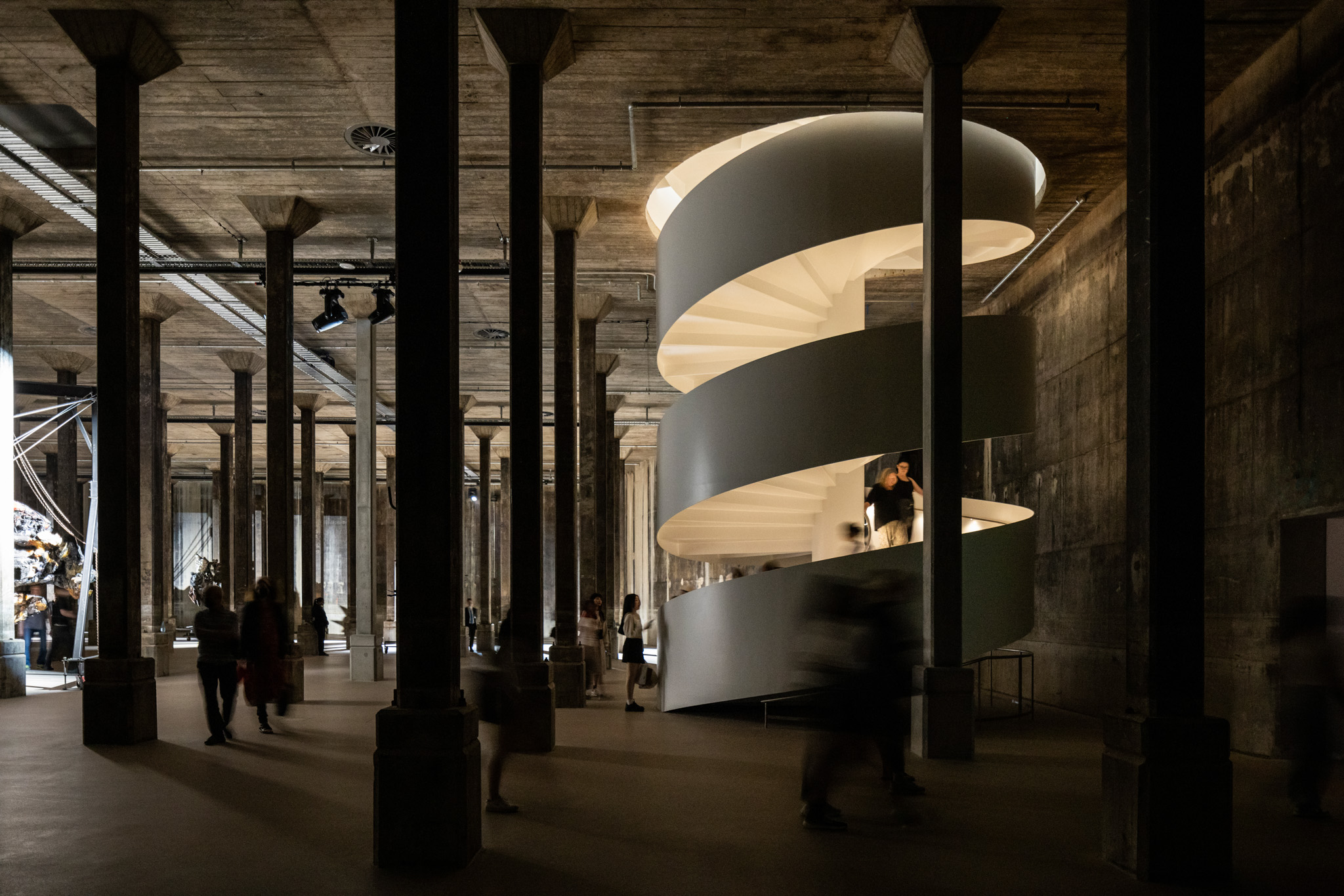
When positioned two levels below ground at Sydney Modern, there is a vantage point from which the gallery is at its most spatially and materially dynamic. This view provides a strange conglomeration of the natural and the artificial; rammed earth and limestone meet steel beam and column, and commoditised escalators cascade between levels. There are also a few artworks placed here and there. From this lower prospect, the space feels surprisingly occupied despite being at roughly 5% capacity on a Monday morning. More a public space that happens to contain art, Sydney Modern aligns with the aspirations of many of today’s contemporary art museums. Designed by SANAA and Architectus in association, the gallery is at once a space for the display of artworks, a landscape to occupy, a permeable gathering place, a site for events, a viewing platform for Eora/Sydney and a distinctive piece of architecture. One year on, there is a mild sense of waning excitement for this new addition to the Art Gallery of New South Wales (AGNSW) – an anticipated response following a popular inauguration.
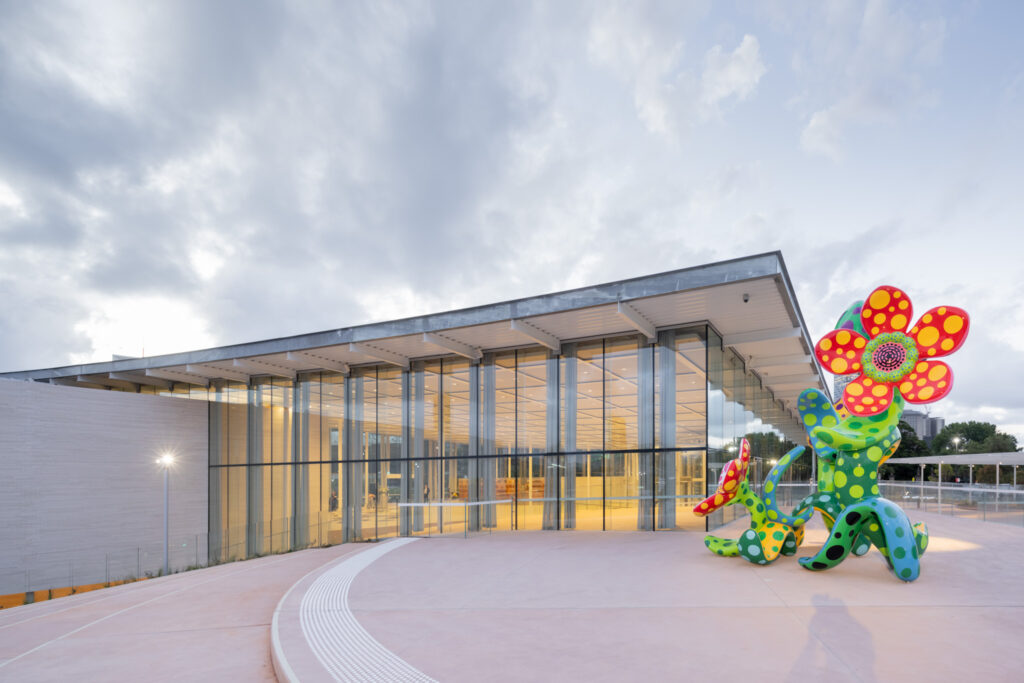
Compare this to the Istanbul Museum of Modern Art (Istanbul Modern) designed by Renzo Piano Building Workshop, another art institution which opened its doors within months of Sydney Modern. Resembling an open, inclusive and permeable space for art, the former is an onionskin of varying layers of security and monetary checkpoints. Just as Sydney Modern is perched on the edge of Sydney Harbour, Istanbul Modern is situated adjacent to the magnificent Bosphorus Strait. Separating Europe and Asia, as well as being a major world transportation route, the Bosphorus Strait is a historical and cultural landmark of enormous geopolitical significance. However, despite its outward appearance – a glazed building with expressed structure and large internal circulation – the museum offers almost no prospect of the water or surrounding context. That is, unless you decide to purchase something from its upper-level café, after which you are allowed to inhabit a small part of the perimeter. The architects are not entirely at fault. Sydney, unlike Istanbul, is not at present the kind of place that warrants a stationing of military personnel carrying machine guns at its museum entry points. And, to its credit, Istanbul Modern has been meticulously detailed and immaculately constructed. Nevertheless, it is a beautiful machine that does not know where it is. It is a missed opportunity. Sydney Modern feels, architecturally, like a scaled-up concept model forced to deal with the realities of construction. It is, however, the more successful of the two museums. Its site-specificity and individuality allow for a simultaneous interaction between object, subject and context.
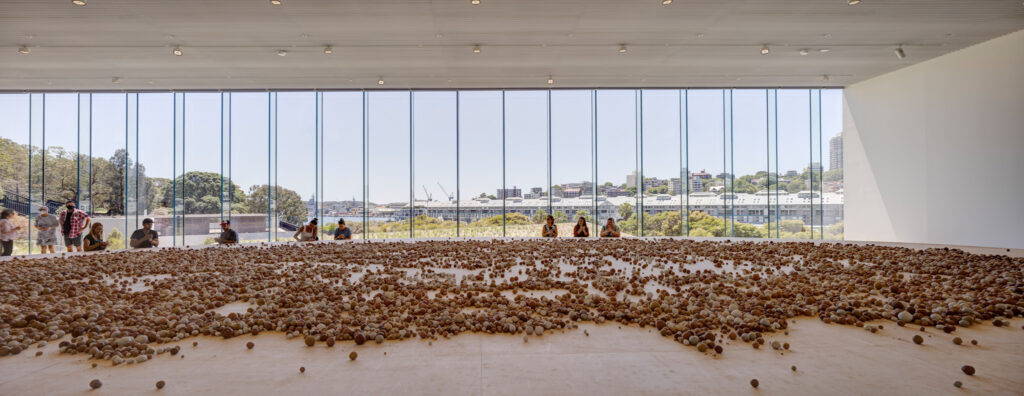
Over the course of the last year, Sydney Modern has proven to be divisive. The criticism has revolved primarily around both its environmental performance and its resemblance to a shopping centre or airport. It has also been suggested that the display of art is subsidiary to both its formal and functional qualities. Conversely, rather than art being demoted through the prioritisation of public space, Sydney Modern
can also be viewed as a place that consolidates art and life. During one memorable visit, a full Bhangra performance (a traditional Punjabi dance of celebration involving costume, drumming and chanting) commandeered the gallery. As an unprogrammed event, the performers entered from the street and descended slowly into the depths of the space, its cavernous volume full of joyous noise, crowds and chaos. Conspicuously, Sydney Modern has brought First Nations art to the fore through its placement of the Yiribana Gallery at the ground floor entry, which also grants one of the most significant views to the harbour. It is a move not dissimilar to the National Gallery of Australia in Canberra whose First Nations collection occupies much of the first floor, where visitors commence their experience.
Aside from blatant correlations to The Tanks at Tate Modern in London – former oil storage units used for power generation – Sydney Modern’s underground ‘Tank’ exhibition space has received far less criticism than the rest of the building. Positioned four levels below ground, the 2200-square-metre volume was used to house oil during the Second World War. Its sensorial appeal is undeniable. The Tank is also an exercise in restraint; it is virtually untouched bar a luminous white steel spiral stair puncturing the darkness and the concrete ceiling. Its seven-month inaugural exhibition The End of Imagination by Adrián Villar Rojas has recently been replaced with a similarly lengthy display from Louise Bourgeois.
A household name, at least in the art world, Bourgeois’ sculptures and gouaches are bound to attract visitors in droves. This blockbuster event indicates that Michael Brand, AGNSW Director, is serious in his
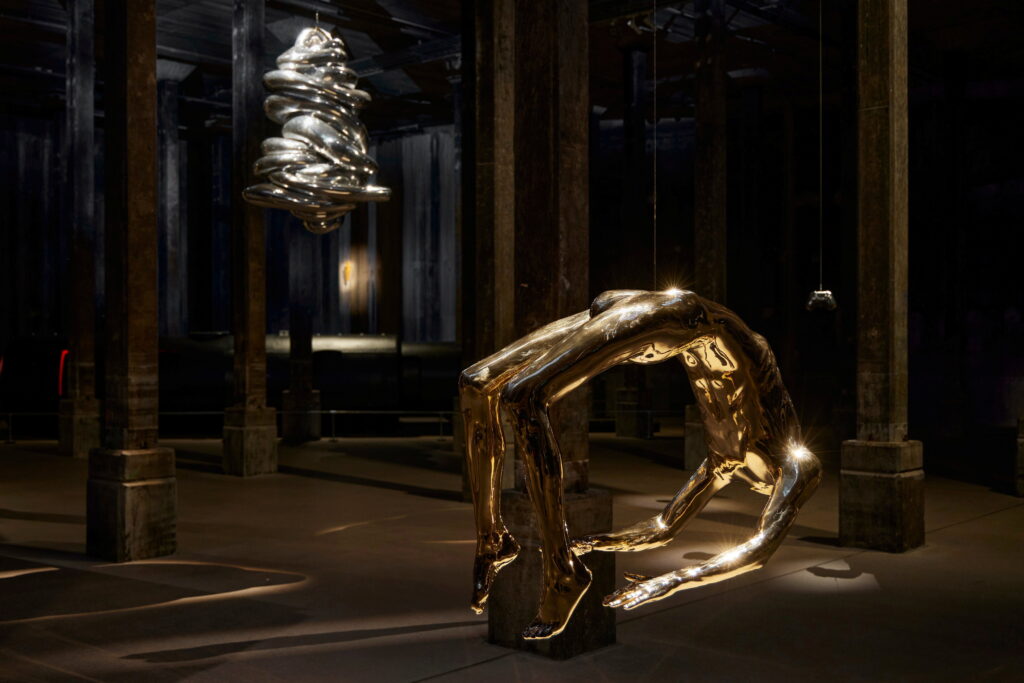
ambition to elevate the gallery to the world stage and compete with the likes of The Getty (the site of his former directorship), MoMA and the Stedelijk. Even the overt associations with Tate Modern seem deliberate; let the world know that we are here, and we are on par! The “old wing” of AGNSW, and its various additions, retain visitor numbers by continuing to host familiar shows like the Archibald, Wynne and Sulman Prize exhibitions. With renovations running concurrently to the construction of Sydney Modern, a new research library and members lounge designed by Tonkin Zulaikha Greer now occupies the lowest level of the gallery. The library’s reading room feels like a secluded, hidden gem for anyone looking for a quiet place to work or study in the precinct. One year on, and amid the hype of Sydney Modern, these parts of the gallery sadly still feel undiscovered. The original AGNSW building, by former government architect Walter Vernon, is unapologetically temple-like – a relic from a foregone era of classical architecture and European sycophantism. It is effectively a fortress for art, and, once inside, a visitor might feel that they could be anywhere in the world. This is certainly typical of art museums throughout the 19th and early 20th centuries, though many contemporary strains bear these residual traits. The Guggenheim Bilbao, for instance, limits its architecture to the building’s facade, foyer and roof geometries. There remains a genericism to many of the internal galleries, in which box-like volumes, painted white over gypsum plaster, accommodate for the pure display of visual art.
At first glance Sydney Modern is none of these things, seemingly pushing the figurative and literal envelope. To play devil’s advocate, it can also be described as a series of conventional white cubes wrapped in a less conventional skin. The three limestone-clad gallery spaces on the lower two levels, for instance, are not especially unique, and the pieces chosen for display are exhibited in a manner familiar to us all. This is the point at which the gallery is at its most conservative, though this could easily be challenged through less standardised, even temporary, forms of display. Of course, there are myriad limitations relating to individual pieces of art. The length of time any work can be displayed where natural light is present varies and is often restrictive. (Despite multiple layers of enclosure, light levels within Sydney Modern’s white cubes are higher than ideal, let alone those external to them.) The volume of artworks kept in storage and owned by AGNSW is immense, and there appears to be a growing accountability for institutions to display greater volumes of what is effectively publicly owned art. It is unclear what impact this has had on decisions made at Sydney Modern, though this pressure may have led to some works being displayed externally to the dedicated gallery spaces. Both the limestone and rammed-earth walls have been configured to host pieces of art, distorting the purity of the architectural diagram. These walls line the spaces dubiously intended for “other” activities, such as performance, gathering and circulation. What this distortion ironically results in is a further convergence of art and life, which this article argues is the power of Sydney Modern. Its temple-like neighbour has the capacity to do much of the heavy lifting where there is a need for conservative approaches to display, granting the newer gallery a greater degree of freedom.
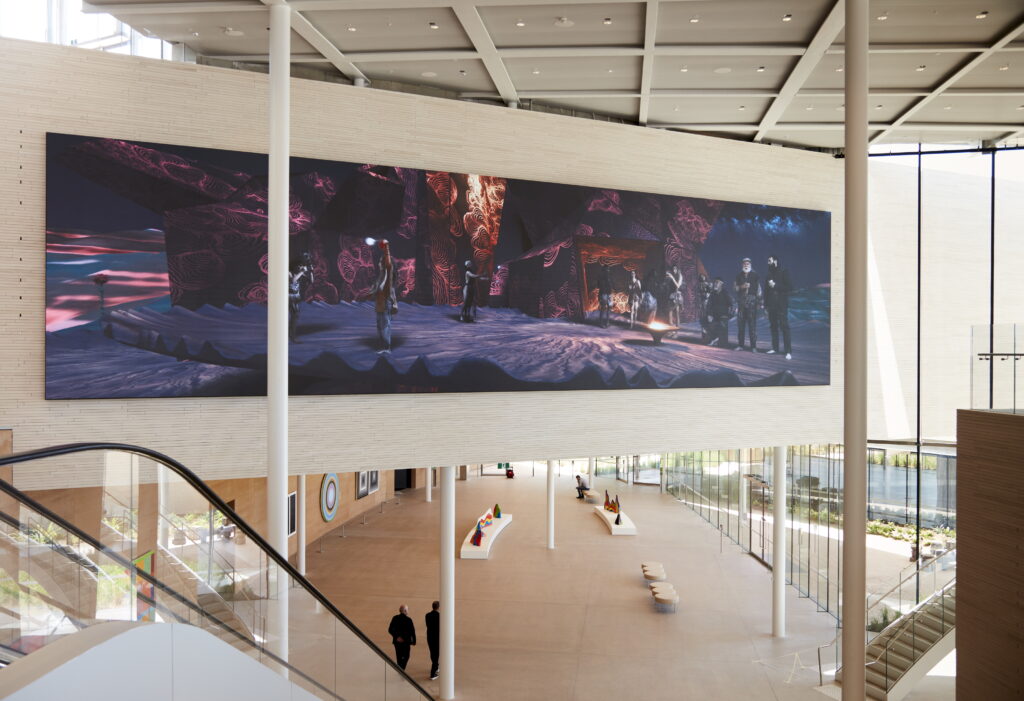
One year on, it seems clear that the building’s idiosyncrasies continue to draw visitors for a variety of reasons, one of which being the opportunity to view art. Considering its $344 million budget, its success as an institution is impressive – particularly when compared to the $1.46 billion that has been allocated to the National Gallery of Victoria’s new contemporary arm (and surrounds), which is yet to be realised. Some of the finishes and construction details at Sydney Modern are certainly indicative of restrained resources, despite many of the proposed materials surviving what was likely a gruelling cost-control process. SANAA are not immune to this regimen, with other comparable projects reflecting similar challenges; for example, The New Museum of Contemporary Art in New York City, completed in 2007. Sydney Modern borrows several strategies from this project, including its pavilion-like curvilinear bookshop and near-identical perforated metal ceilings. Like Istanbul Modern, The New Museum is also a fortress for art. Sydney Modern is anything but. Despite setbacks posed by the pandemic, digital access to visual art and so forth, art museums worldwide are continually increasing in popularity and quantity. What this has led to is a diversification of contemporary typologies, some of which this article has touched upon. Sydney Modern is not a fortress, nor does it embody an entirely new experience. It is a public space partially, but not wholly dedicated to the appreciation of fine art. It may take another decade or more to understand its long-term effect on Sydney as a world city and its place in the history and status of contemporary 21st century art museums. However, it is evident that one year following its inauguration, Sydney Modern is continuing to thrive in its self-appointed role as cultural melting pot.

Aerial view of the AGNSW Sydney Modern Project, 2022. Photo: Iwan Baan
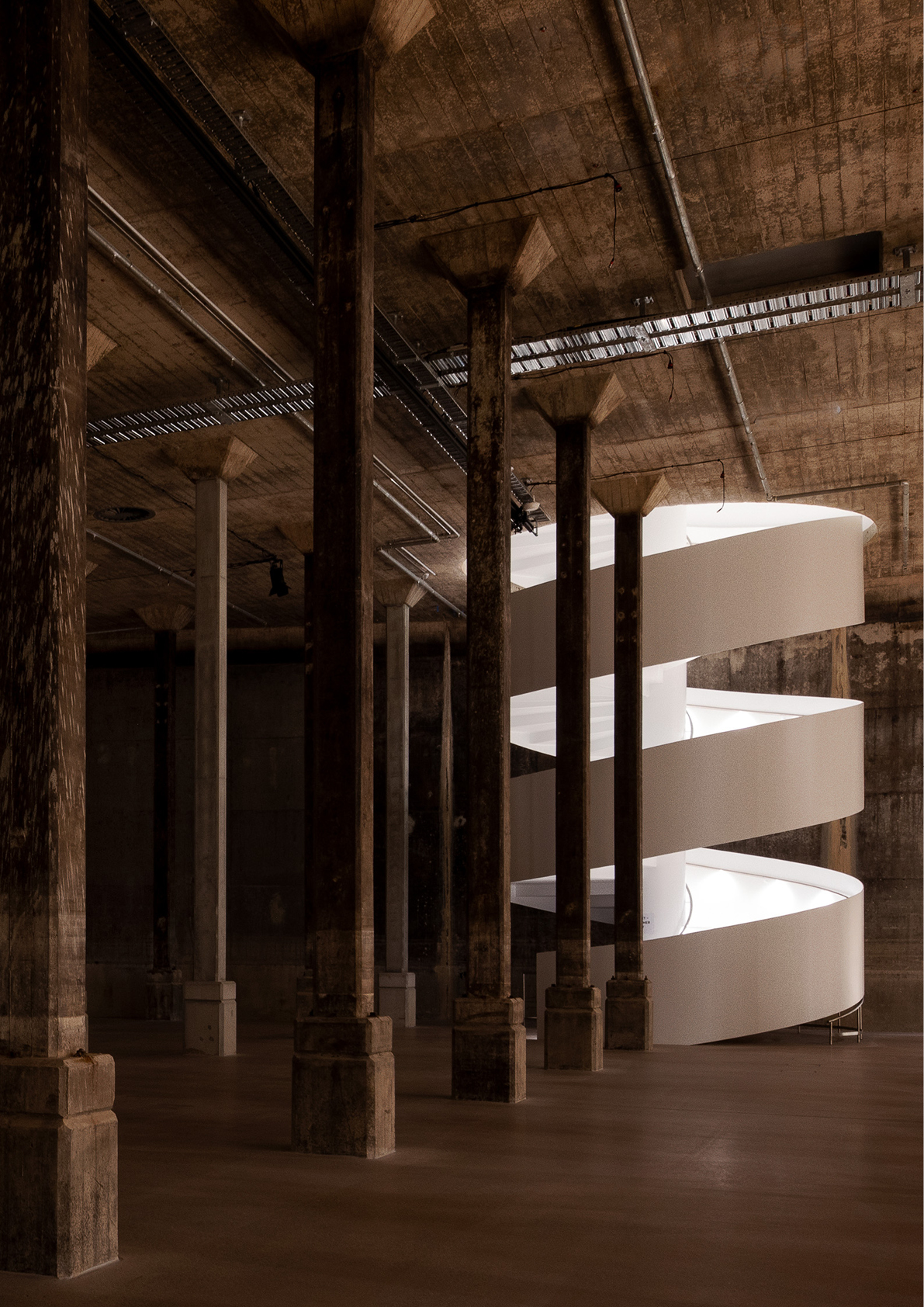
Spiral staircase by Richard Crookes Construction leads to Sydney Modern’s vast underground space – once a former World War II fuel tank.

